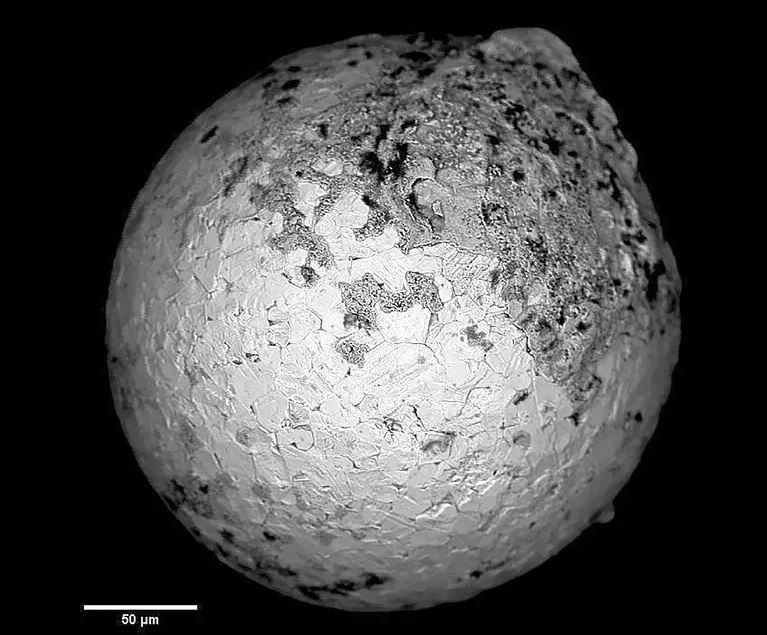On January 8, 2014, a meteorite headed north of Manus Island off the northeastern coast of Papua New Guinea slammed into the ocean after crashing through Earth’s atmosphere. Sensors across the United States captured its position, speed, and brightness, and filed the information away with other comparable incidents.
For five years, no one questioned that information; in 2019, however, theoretical astrophysicist Avi Loeb and undergraduate student Amir Siraj at Harvard University discovered it. Mr. Siraj found that the fireball was a huge anomaly based on its recorded velocity and heading.
Dr. Loeb led a team last month to the bottom of the western Pacific in search of pieces of the fireball. As of June 21st, he was saying he did. To the dismay of many of his peers, he suggests that such findings may be the means by which scientists locate proof of alien life.
However, many astronomers saw the news as the latest instance of Dr. Loeb making a bold, rushed statement. His statements, as well as a commercial movie playing in Times Square about the hunt for alien life, have been criticised for distorting the public’s understanding of how science truly operates.
To guarantee that only high-quality studies are published, academics assess one another’s work via a procedure called “peer review,” which Dr. Desch noted numerous of his colleagues were suddenly refusing to participate in.
Dr. Loeb has been a prolific cosmologist for the better part of his career, publishing hundreds of publications on topics including black holes, dark matter, the birth of stars, and the ultimate destiny of our cosmos. However, ever since the 2017 flyby of the interstellar object Oumuamua, he has been completely engrossed with the quest for extraterrestrial life. Dr. Loeb argued that the object may be an artefact of intelligent life, while experts questioned whether it was an asteroid or a comet from another star system.
In 2019, they published a paper detailing the finding. The Astrophysical Journal originally rejected the paper, but after the U.S. Space Command announced in a memo that went viral on Twitter that the velocity measurements of the fireball were precise enough to infer interstellar origin, the journal eventually accepted it for publication in November.
According to Peter Brown, a meteor physicist at Western University in Ontario, just appealing to authority isn’t enough. It is unclear how reliable the information from the United States Department of Defence is, which impacts how probable it is that the item originated from another world.
For two weeks, the research team towed a specially constructed sledge across the bottom, fitted with magnets, cameras and lights, and retrieved it at regular intervals to check for metallic fragments of the 2014 fireball. At the end of it all, they brought back dozens of shiny beads, each one less than a millimetre in diameter. The spherules were mostly composed of iron, with trace levels of other metals, according to preliminary shipboard studies.
Marine geophysicist Maurice Tivey from Woods Hole Oceanographic Institution, who was not engaged in the voyage but has previously employed underwater robots to explore the seabed in that area, has noted that this is not something that is often seen in the seas near Manus Island.
While the deep water expedition was in progress, scepticism over the mission was rampant at the recent Asteroids, Comets, Meteors Conference. There, Dr. Desch contended that the meteor would have totally burnt up in the atmosphere if the fireball had been travelling as rapidly as claimed.
Dr. Brown, who like Drs. Loeb and Siraj presented data from the NASA fireball catalogue, described a recent study in which he utilised data from a variety of equipment to crosscheck measurements for 17 of the events. His findings, which will be published in The Astrophysical Journal, show that the catalogue data often miscalculates velocities and orientations, with the magnitude of the mistake growing for faster objects.
Even while he cannot see the raw signals from U.S. military sensors, he is confident in their accuracy, unlike many of his peers. The fact that he and his colleagues believe they have recovered meteorite bits at the site pinpointed by those measurements further strengthens their conviction.
The government is unlikely to make public the accuracy of the information collected by such devices. Dr. Loeb has submitted the spherules to be thoroughly analysed and dated to laboratories at Harvard University, the University of California, Berkeley, and the Bruker Corporation in Germany. Aged spherules or those with a unique isotopic signature can only have come from beyond our solar system.
Dr. Loeb himself conducted some of the first reviews at Berkeley. The presence of uranium and lead in early analyses allowed for an age estimate to be made. Dr. Loeb argues that two spherules discovered along the predicted route of the fireball are as ancient as the cosmos.
In contrast, a spherule found beyond the fireball’s course is likely geological or from a separate meteorite, as Dr. Loeb has hypothesised. He calculated that this spherule was several billion years old, or about the same age as the Sun.
Astronomer Don Brownlee from the University of Washington, who used magnets to gather cosmic marbles from the seabed in the 1970s, claims that spherules likely aren’t from natural meteorites if they lack nickel. However, if no oxygen is detected, he argues, it’s very improbable that the material entered Earth’s atmosphere. Dr. Loeb has mentioned the lack of oxygen in his writing, but he has only mentioned the absence of nickel.

